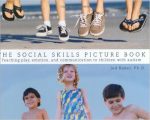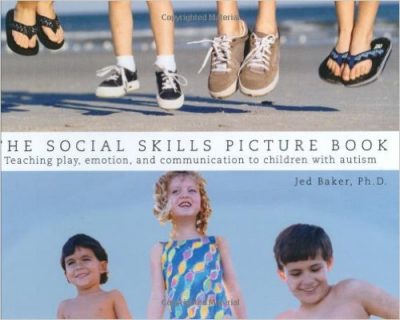 Author: Jed Baker, PhD
Author: Jed Baker, PhD
Publisher: Future Horizons – 177 pages
Book Review by: Laxmi Chaandi
The range of abilities pertaining to cognitive, emotional, language, motor, sensory, and social development varies greatly in individuals having autism spectrum disorders (ASD) and Asperger’s Syndrome. That is why the word ‘spectrum’ is used as part of ASD. There is a third but lesser-known disorder that is part of this family of disorders, and it is called pervasive development disorders – not otherwise specified, or in short from (PDD-NOS)
Some autistic individuals fall in the mentally-retarded range, while others such as those with Asperger’s Syndrome and High Functioning Autism are in the superior intellectual range. Many are in the in-between range.
It has been learned though much research (much of it just in the last few decades) that people with these disorders better learn to overcome their learning challenges visually. That is why many current books designed to help them are primarily visual in nature.
Difficulties in communicating with others are an important part of those with autism. These difficulties lead to social interaction as well.
To give you a brief overview of this highly practical landscape-oriented workbook, we provide you below and outline of its contents:
- Part I. Before You Begin
- The Autism Spectrum and the Importance of Visual Aids
- About Social Skills Picture Books
- Generalization of Skills
- Part II. About Social Skills Picture Books
- Nonverbal Cues and Body Language
- Conversation
- Building and Maintaining Friendships
- Dealing with School and Work
The key features that book offers are:
- A visual learning format
Photos of actual students engaging in a wide variety of social situations show, rather than tell, the right (and wrong) ways to interact in different circumstances. Most significantly, they visdually illustrate the positive and negative consequences of both ways of interacting.
- A way for students and families to create their own Social Skills booklets
Students are encouraged to use photographs of themselves to create a booklet for each skill they learn. (The booklets can later be combined into a “ book” if desired). This is a creative, exciting way to personalize each skill as they learn it, and has the further advantage of making performances of the skills more concrete. These booklets can also serve as a reference, should skills need to be refreshed in the future.
- Real-life situations that are important to teens, such as:
Making new friends | Interruptions and conversation | Forbidden topics | Asking for help
Asking questions in class | Respecting each other’s space | Working as part of a group
Making mistakes | Saying hello and goodbye | Giving class presentations | Asking someone out
Making supportive statements | Doing difficult schoolwork | Interviewing for a job
This is an excellent guide for those tasked with helping children and adults improve their lives.
Author:
Jed Baker, PhD – Having earned his MA and PhD in clinical psychology from the University of Albany, Jed Baker is a behavioral consultant for several New Jersey school districts where, nearly two decades ago, he organized a group to help children with social communication problems.
That group expanded and ultimately became the Social Skills Training Project under Dr. Baker’s directorship. Dr. Baker also presents lectures all over the world on social skills training, and is on the board of directors of the Asperger Syndrome Education Network, Inc. (ASPEN).
In 2001, based on the success of the Social Skills Training Project, Dr. Baker wrote The Social Skills Picture Book, designed for young children with social communication challenges. The positive response from parents and teachers was overwhelming.







